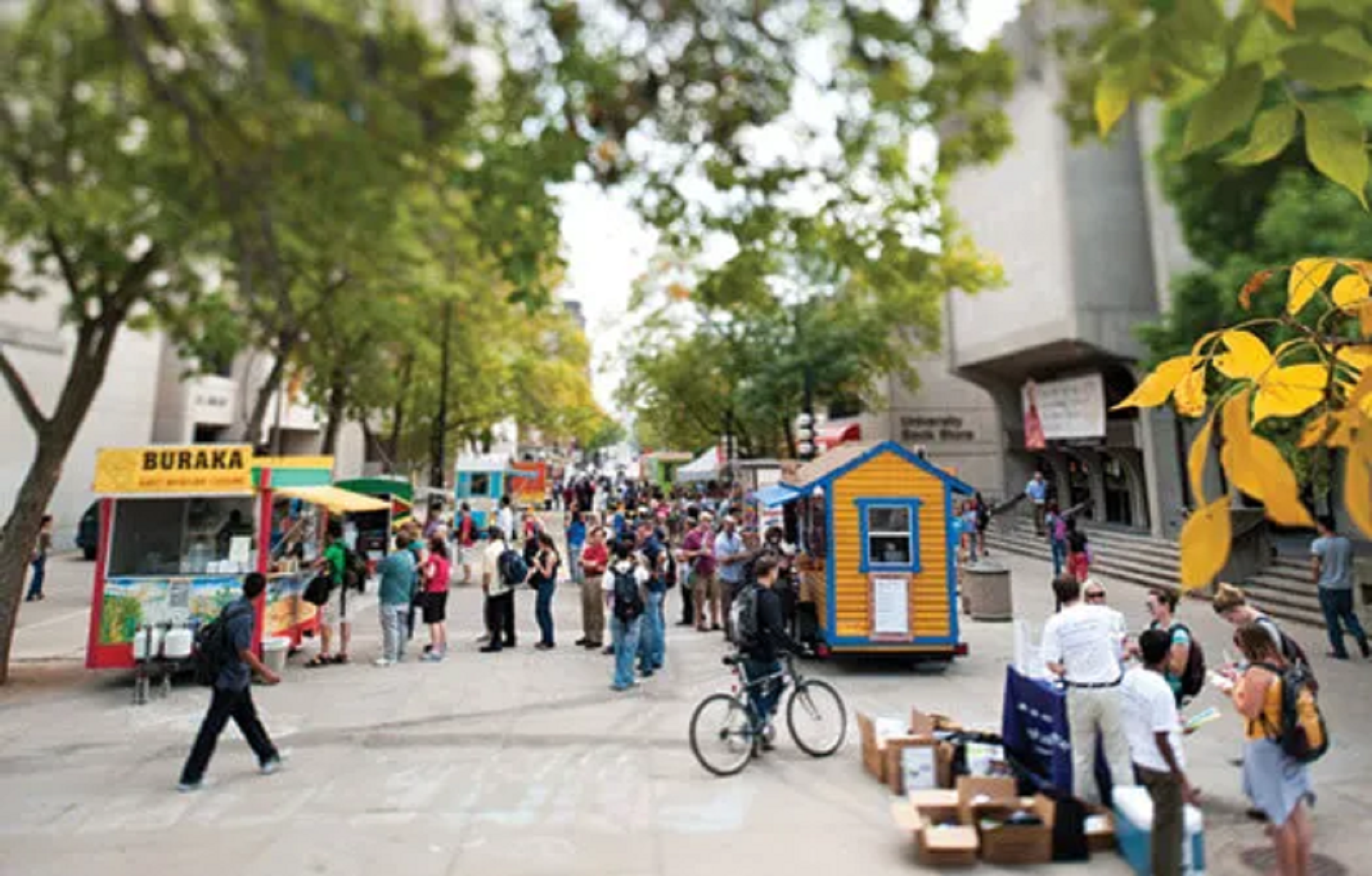
Food trucks and people friendly cities
Walking home after an afternoon class one day at my alma mater, UW - Madison, I decided to walk through Library Mall. Library Mall is a pedestrian-only plaza surrounded by public buildings: two libraries (shocker I know), the UW bookstore, a church, and several other university buildings. From Monday to Friday, it was always lined with food trucks around lunch time. It wasn’t exactly the fastest way to get where you were going due to all the people, but it was almost always more interesting to take that route than the alternatives. As I walked through seeing and smelling all the different options available, I was confronted with a dilemma. Do I go home and make my own lunch like a frugal and practical student? Or do I stop for a philly cheesesteak or empanada? Most of the time, I chose the former, but that particular day, I went for the empanada.
Food trucks have become a common sight in certain environments throughout the U.S. According to the U.S. Census Bureau, food truck establishments nearly doubled from 2013 to 2018 and similarly nearly doubled in sales from 2012 to 2017, making it a billion dollar industry.
Think about where you normally find food trucks: festivals, street fairs, outdoor plazas and malls, or parked along the sidewalk. What do they all have in common? The customer base is a pedestrian or cyclist. These aren’t drive-thrus or drive-to restaurants. They are simply meant for serving people walking around enjoying life. The rare exceptions are on rural highways like what I saw in Hawaii years ago (what I’ll call park and dines), where people park along the side of the road briefly and then walk up to get some chicken, fruit smoothies or garlic shrimp (my favorite on that trip).
I’m sure everyone reading this has had a good experience dining from a food truck at an outdoor concert, a brewery, or a music in the park event. For most of us in the urbanism field, I imagine they represent an example of how cities can be better outdoors with fewer cars around. For most Americans, food trucks or pop-up tents at an occasional event like farmers markets are the closest thing they will experience to a permanent outdoor market/public plaza like those that can be found more frequently in European cities and elsewhere in the world.
The pedestrian-friendly environment that is often necessary for food trucks to thrive is also beneficial economically for traditional restaurants. As Strong Towns recently pointed out, a researcher hired by a group of businesses in Toronto analyzed the economic impacts of temporarily converting on-street parking spaces to outdoor dining patios, sometimes called parklets in the urbanism world. They found that the restaurants gained $181 million in revenue from the parking spaces after an initial investment from the restaurants totaling $25 million. This dwarfs the estimated $3.7 million in revenue for the City’s parking authority that would have been generated if those parking spaces had remained. This clearly was a win for the businesses, and, depending on the local sales tax rate, the city could have compensated for the lost parking revenue with more sales tax revenue.

What lessons should we take from this information? This is just one example of how pedestrian-friendly design is great for entrepreneurs, pedestrians, and cities as a whole. The prosperity of food trucks and on-street, protected patios can be in opposition to the car culture that is so dominant in the U.S., and can be harmed by prioritizing things like car parking instead of seating or landscaping. Those in my profession, civil engineering, and those in elected office, can improve conditions for food trucks and patio dining by designing and approving the implementation of traffic calming measures. These include narrowing drive lanes, removing on-street parking in cases where the space can be used more efficiently and profitably, and implementing other design measures to make driving fast in cities uncomfortable, and make being outside of a car more comfortable.
For those who like the novelty of food trucks or even just want more outdoor dining opportunities, you can advocate for pedestrian-focused design in our public spaces, including streets, to make it easier for those businesses to thrive. For those outside of the planning or engineering professions, you can email, call, and/or show up to public meetings to seek safer accommodations for pedestrians from your elected or appointed local officials. You can do it for safety, for economic prosperity, for your quality of life, or because you’d simply like more food out of a truck!
Note: This article first appeared in the ENU Newsletter, a newsletter written by Emerging New Urbanist members about topics and debates within the movement. Subscribe to the newsletter.




